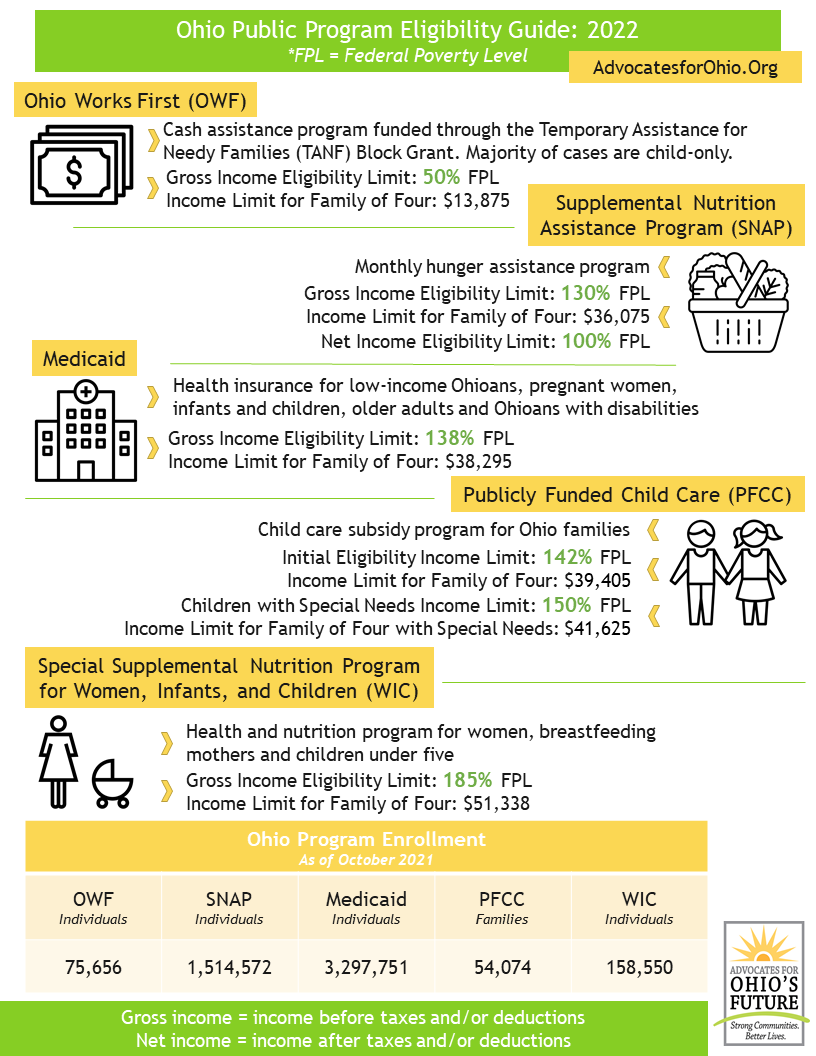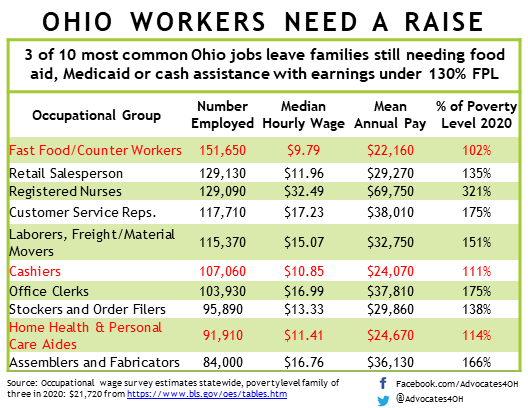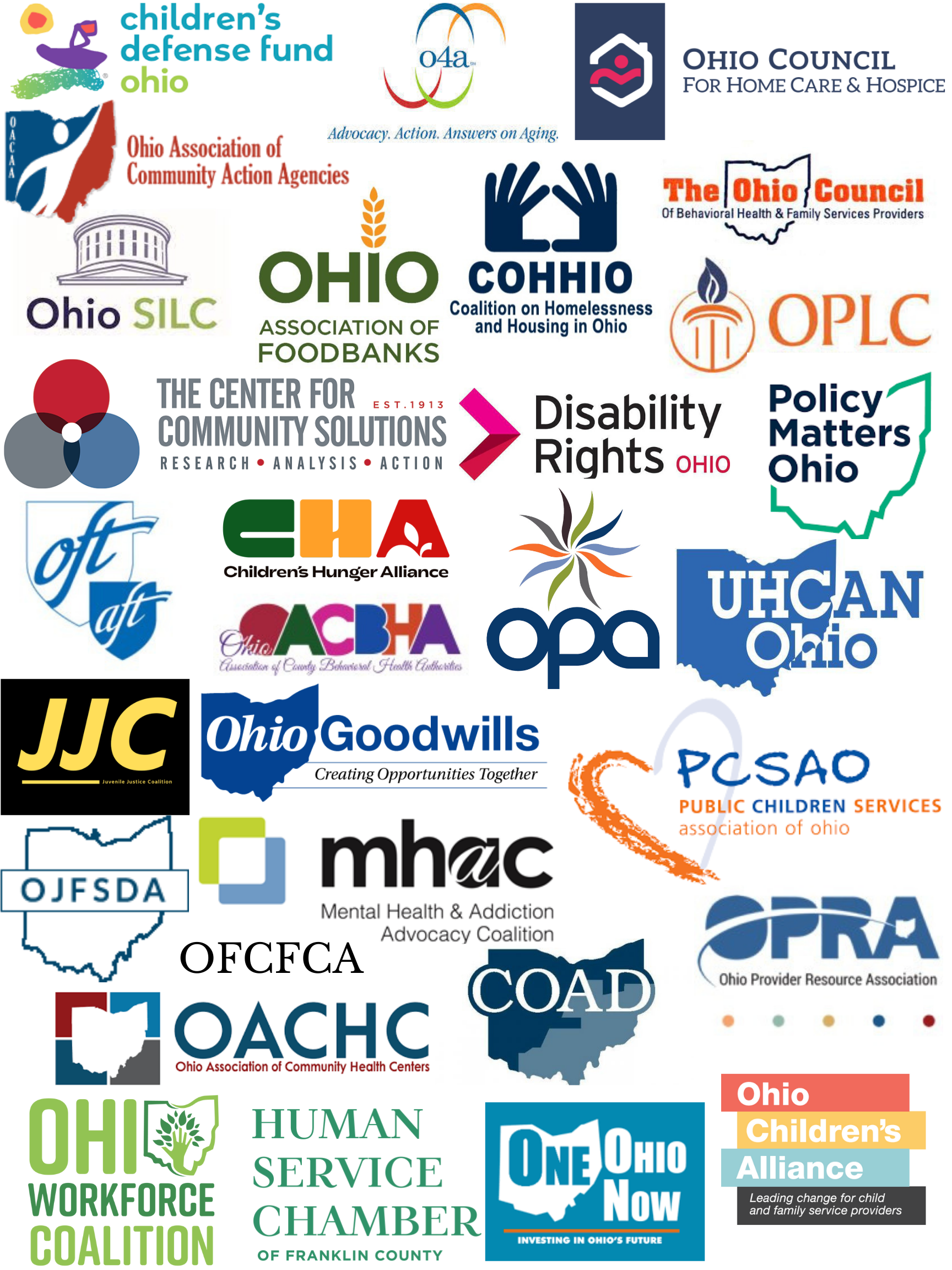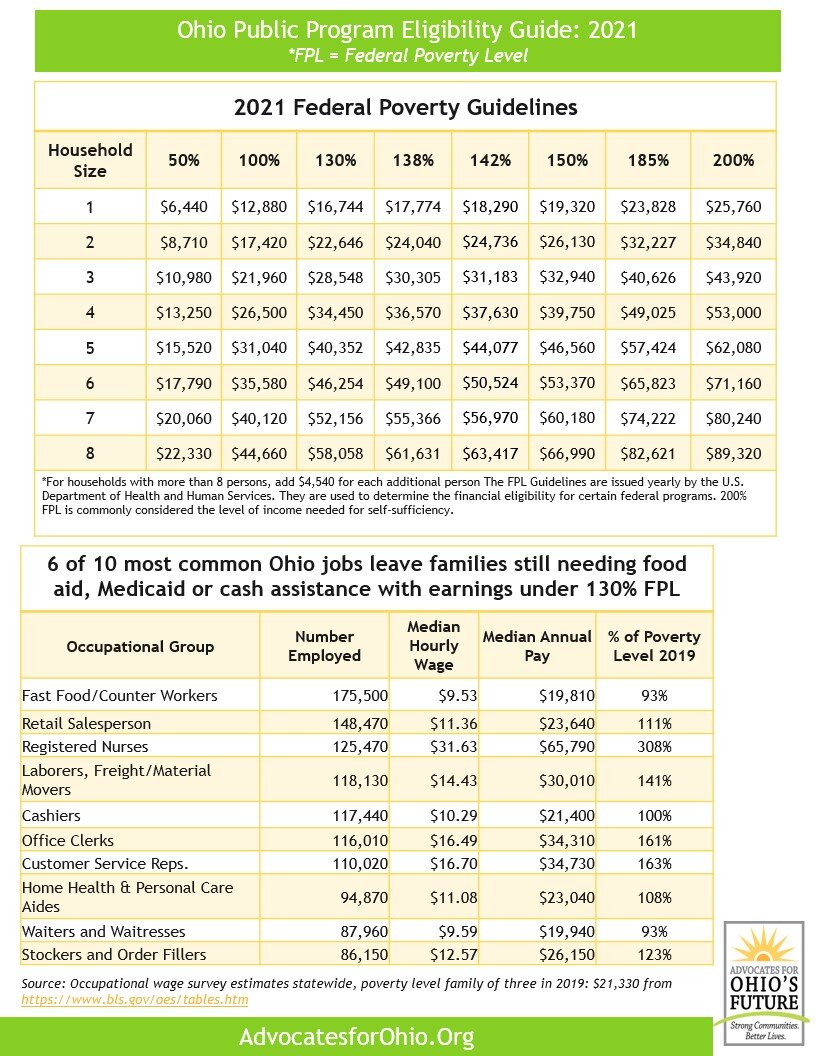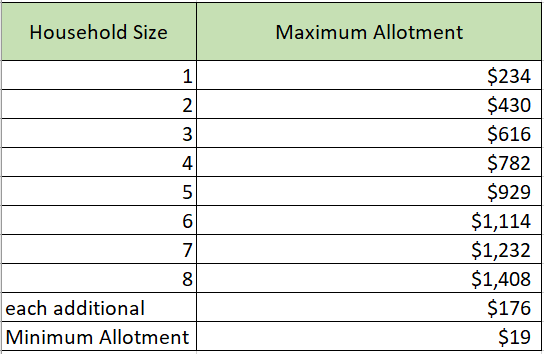Advocates for Ohio’s Future (AOF) is a nonprofit, nonpartisan coalition of over 500 state and local health and human services policy, advocacy and provider organizations that strive to strengthen families and communities through public funding for health, human services, and early care & education. We work to empower and support nonprofit organizations in the critical work they do, especially as it relates to lifting up the most vulnerable among us.
When planning for 2021, we knew it would take many months, if not years, for Ohio’s families and businesses to recover from the coronavirus pandemic.
When planning for 2021, we knew it would take many months, if not years, for Ohio’s families and businesses to recover from the coronavirus pandemic. The need to protect and increase basic needs assistance and invest in work supports for Ohioans and their families that would last the duration of the economic fallout—not just the public health crisis—united our member organizations and framed our policy priorities for the year.
Medicaid, broadband and supporting low-income families through TANF
In collaboration with partner organizations, AOF focused our advocacy efforts to:
Maintain Medicaid eligibility without barriers or cuts so that Ohioans seeking health care and mental health and addiction treatment can continue to access vital services during these multiple public health and economic crises;
Increase access to broadband to help all low-income families afford high-speed internet access and incentivize internet service providers to update and improve their networks in low-income areas so all Ohio families and businesses have the ability to participate in education, telehealth and Ohio’s economy; and
Support the immediate, emergency needs of low-income children and families by investing in the core components of the TANF program including emergency assistance, work supports (PRC), food, housing, income-support, and child care and ensure unspent TANF dollars are reinvested into sustainable core programs to increase the security of low-income families and expand job training and work opportunities.
AOF-led education and media efforts resulted in budget and policy wins
Throughout the introduction and initial hearings of the state biennial budget bill, House Bill 110, AOF and our partner organizations went to work analyzing proposed appropriations and massive policy pieces included in the bill. We formed our initial advocacy strategy to meet with elected officials, testify in committee and educate our supporters about what was included in the budget in all its forms.
Given the success of our COVID-19 Health and Human Service Policy Response webinar series in 2020, we endeavored to launch a series of webinars every other week during the budget process to feature our partner organizations reviewing their health and human services section of expertise in the state budget, talk about their priorities and offer ways for our viewers to take action and advocate on issues important to them. We planned and coordinated 10 free webinars over the budget process with over 1,000 viewers and 40 featured speakers. You can revisit AOF’s budget webinars here.
Unfortunately, the content and impact of the state budget bill took a turn for the worse in the final weeks of deliberations. By adding provisions that derailed the Medicaid procurement process, passed on funding for critical broadband infrastructure, jeopardized quality child care and diverted critical funding for public programs and community services to pay for tax cuts, Ohio Senate leaders confirmed their budget was not for the benefit of Ohio’s children, families and communities. AOF and our partner organizations mobilized quickly to coordinate two in-person press conferences, social media storms, direct contact campaigns, print media and broadcast interviews along with direct advocacy to lawmakers to consider the ramifications of the damaging provisions on their constituents who continue to struggle and are the most at risk before passing the final state biennial budget.
Due to the efforts of many of our partners, stakeholders and supporters over a short period of time, the final version of HB 110 did not include many of malevolent provisions added in the final weeks and included a number of positive policies, including historic investments in broadband access and adult protective services, and the extension of Medicaid coverage for postpartum mothers up to 12 months.
Over 90 organizations mobilized against SB 17, aimed at SNAP and Medicaid
In addition to our proactive budget agenda, AOF and our partners responded to the most comprehensive legislative threat to public programs introduced in years; Senate Bill 17. SB 17 was introduced in late January and sought to make changes in eligibility for the Supplemental Nutrition Assistance Program and Medicaid, work and education requirements for certain Medicaid recipients, requirements for Supplemental Nutrition Assistance Program electronic benefit transfer cards, and eligibility for and overpayments of unemployment compensation.
All people need safety and security, especially in the middle of a pandemic and a recession.
Though the bill sponsor Senator Tim Schaffer claimed these reforms would “repair our safety net so that it’s strong enough to catch the needy, the folks eligible to receive–and need–public assistance,” AOF and our partner organizations disagreed SB 17 does not protect the safety net and exposes vulnerable Ohioans to loss of critical, earned support in challenging times. It punishes workers and creates more barriers for children, families, working adults and seniors to get the help they need. All people need safety and security, especially in the middle of a pandemic and a recession. Public programs like SNAP, Medicaid, and unemployment insurance are the strongest lifelines to ensure our neighbors have the supports they need during these challenging times.
Unlike any issue we have worked on, more of our members and partners raised concerns about the provisions of Senate Bill 17. In just a week, we had more than 90 local, state and national organizations join a sign-on letter to the Senate Government Oversight and Accountability Committee and Senate leadership in opposition, as well as organized over 50 opponents to submit testimony in person or in writing against the bill. AOF coordinated weekly stakeholder meetings, organized a social media toolkit for our members and partners to spread the word and helped concerned individuals and organizations take direct action against the bill with their elected officials.
After four hearings and a sub-bill, SB 17 sits stalled in committee but we continue monitor chatter for any intention to continue hearings on the bill.
AOF highlights equity with new digital resources
In addition to our budget policy work AOF has four issue-specific work groups: Temporary Assistance for Needy Families (TANF), Broadband Access, Work and Wages, and Equity. These groups are chaired by members of AOF and convene regularly to discuss current events under these topics and plan advocacy initiatives.
Stemming from an idea in AOF’s Equity work group, we released an Equity Resources page on our website this year. Equity is a priority in all of AOF’s policy work, and we’re proud to be a resource for members, partners and supporters to engage with equity.
Minority Health Strike Force 1-Year Anniversary, continues strategic communications into 2022
In 2020, when Ohio’s Minority Health Strike Force report was being written, AOF stepped up to host town halls across the state for Ohioans to provide input on the strategic plan being created to address health disparities in Ohio. In August 2021, on the one-year anniversary of the release of the report, AOF asked for a comprehensive report on the status of implementation. We issued a letter to Governor DeWine and his administration asking for an update and launched a social media storm to raise awareness that the administration has done very little to achieve and report on the goals laid out by the Task Force. AOF will continue to monitor implementation into 2022 and beyond.
Ohio American Rescue Plan funding totals $5.4 billion
The American Rescue Plan Act (ARP) will bring unprecedented funding into the State of Ohio and local governments. AOF has been keeping a close eye on funds coming into Ohio, particularly the State Fiscal Recovery Funds (SFRF), the largest single pot of funding coming into the state at $5.4 billion. These funds are incredibly flexible, which has allowed the state to so far use the funds in ways that don’t prioritize immediate health and human services needs and that don’t focus on an equitable recovery from COVID-19.
In May, AOF hosted a roundtable webinar reviewing what ARP funding was coming into Ohio for Medicaid, education, food access, behavioral health, home and community-based services, older adults, and more. In October, we hosted a second ARP webinar for AOF members to present their proposals on how the remainder of Ohio’s SFRF allocation should be spent. Governor DeWine and his administration have not hosted any public hearings or created any opportunities for public comment on how this historic funding should be allocated so we held a hearing of our own and created a report based on AOF members’ webinar presentations to send to the administration continuing to push for an open, transparent state allocation process with public input.
Ohio COVID-19 Recovery Coalition will continue to meet to protect benefits into 2022
Once the federal Public Health Emergency (PHE) declaration was put in place in January 2020, program requirement waivers started to be tied to the end of the PHE as a bellwether for the end of the pandemic and a time to reinstate requirements. As a result, at the end of the PHE, Ohioans will be facing the redetermination of their Medicaid benefits, the return of TANF cash assistance and Supplemental Nutrition Assistance Program (SNAP) work requirements, re-starting student loan payments, loosening Medicaid telehealth allowances, reduced SNAP payments once Emergency Allotments end, and more – all at once.
Recognizing this upcoming challenge faced by state and local institutions and Ohioans, AOF formed the Ohio COVID-19 Recovery Coalition. With three workgroups – Healthcare, Nutrition and Family Stability – the Coalition meets weekly to discuss updates, meet with the state administration, and plan advocacy initiatives. Our groups have so far met with two state departments and sent two letters to the administration. This Coalition will continue to meet through the anticipated end of the federal PHE in April 2022.
New member organizations and expanded membership options
AOF is proud to announce that, stemming from all of our successes and engagement in 2021, we’re launching a new membership structure in 2022 that will expand membership access and engagement options. We will also welcome one new member organization to our Steering Committee, further expanding the depth and breadth of health and human service voices at our table. Keep an eye out for more information in our newsletter!
AOF is Advocate of the Year, honored by the Ohio Association of Area Agencies
All of AOF’s hard work and forward-thinking has been recognized by our partners. In October, AOF was honored by the Ohio Association of Area Agencies on Aging as the 2021 Advocate of the Year. AOF’s accomplishments are only possible because of the support and commitment of our member organizations.
We’re so grateful to all of our partners, members and supporters for a successful 2021.
Follow our plans in 2022
We’re so grateful to all of our partners, members and supporters for a successful 2021. We’ve seen firsthand what can be accomplished when we focus the combined power of our coalition organizations and supporters towards our common goal—to protect Ohio’s most vulnerable citizens and ensure all Ohioans live healthy lives in strong communities. We have big plans for 2022, including continuing the Ohio COVID-19 Recovery Coalition’s work, monitoring the upcoming Capital Budget, and more. Keep in touch by following us on Twitter, Facebook, and signing up for our weekly newsletter on our website.

